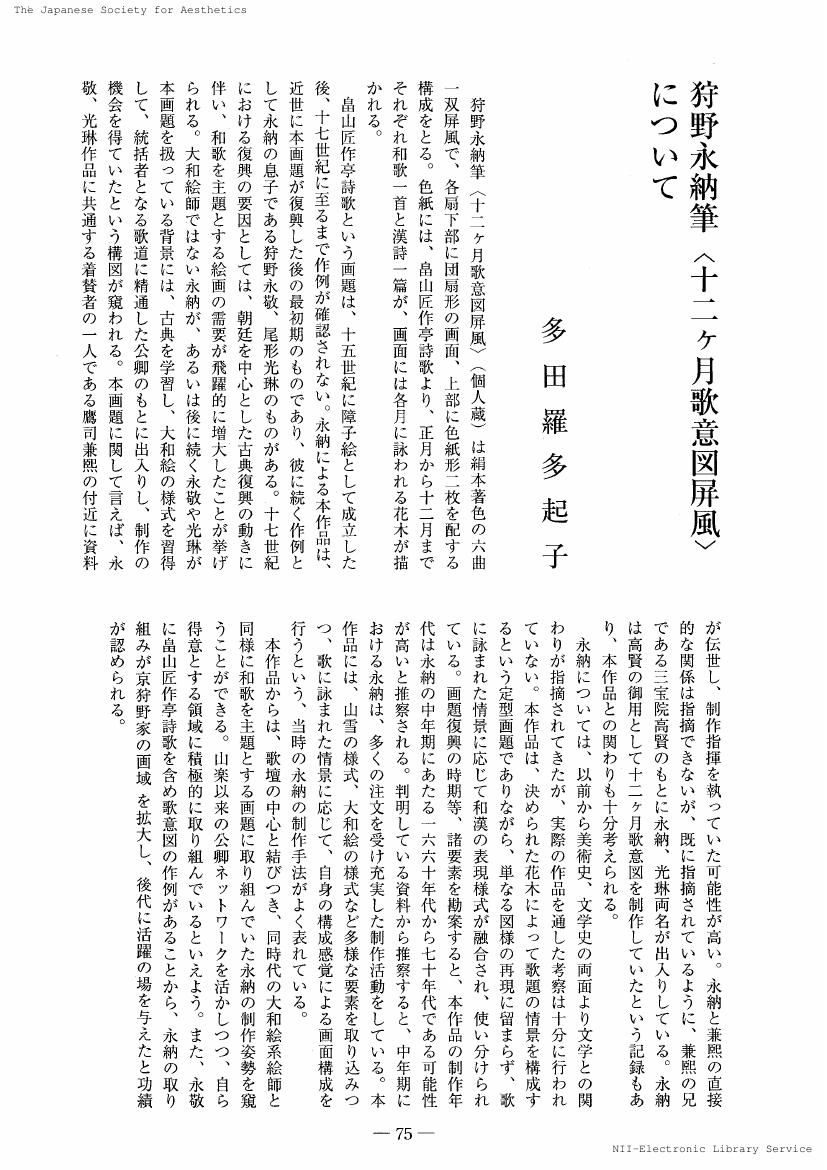1 0 0 0 OA 狩野永納筆<十二ヶ月歌意図屏風>について : 画域の拡大による新規需要への対応
- 著者
- 多田羅 多起子
- 出版者
- 美学会
- 雑誌
- 美学 (ISSN:05200962)
- 巻号頁・発行日
- vol.57, no.1, pp.56-69, 2006-06-30 (Released:2017-05-22)
"Folding Screen Painting to Explain Meaning of Twelve-Month Songs" by Kano Einou (1631-97) is a pair of six-panel screen paintings on the basis of the waka poem of "Hatakeyamasyousakutei-siika". Uta-e (the painting basis on the waka poem) revived at the beginning of the early Kinsei era accompanying the revival of the court world of waka poetry, and "Hatakeyamasyousakutei-siika" also revived as a theme of a painting at that time. The work by Kano Einou is a very early example at this time. The purpose of this paper is to clarify the details, background, and his aim that Einou who was not specialist of yamato-e drew the painting on the basis of the waka poem eagerly, and to show how to have made up his own style in his producing such a work. In conclusion, Einou can be considered as one of a pioneer in the field of folding screen painting with waka poem by the painter who was not specialist of yyamato-e. He used the network succeeded from the grandfather Kano Sanraku and father Kano Sansetsu, and learned the technique of yamato-e, and worked on new theme actively. It can be said that work that he increased possessed important significance in followers such as Kano Eikei and Ogata Kourin.
1 0 0 0 OA 狩野永納筆<十二ヶ月歌意図屏風>について(第五十六回美学会全国大会発表要旨)
- 著者
- 多田羅 多起子
- 出版者
- 美学会
- 雑誌
- 美学 (ISSN:05200962)
- 巻号頁・発行日
- vol.56, no.3, pp.75, 2005-12-31 (Released:2017-05-22)
